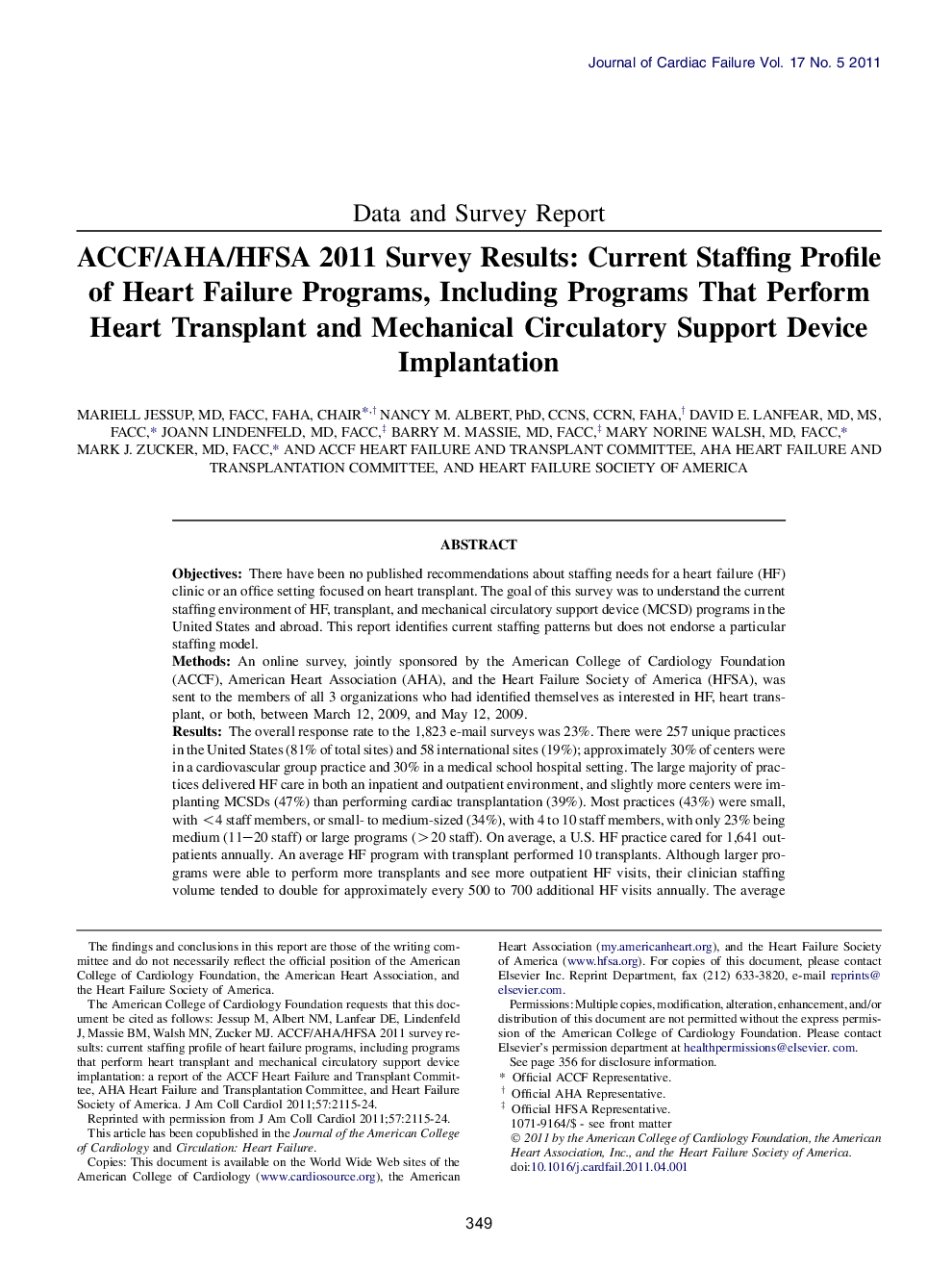| Article ID | Journal | Published Year | Pages | File Type |
|---|---|---|---|---|
| 2960152 | Journal of Cardiac Failure | 2011 | 10 Pages |
ObjectivesThere have been no published recommendations about staffing needs for a heart failure (HF) clinic or an office setting focused on heart transplant. The goal of this survey was to understand the current staffing environment of HF, transplant, and mechanical circulatory support device (MCSD) programs in the United States and abroad. This report identifies current staffing patterns but does not endorse a particular staffing model.MethodsAn online survey, jointly sponsored by the American College of Cardiology Foundation (ACCF), American Heart Association (AHA), and the Heart Failure Society of America (HFSA), was sent to the members of all 3 organizations who had identified themselves as interested in HF, heart transplant, or both, between March 12, 2009, and May 12, 2009.ResultsThe overall response rate to the 1,823 e-mail surveys was 23%. There were 257 unique practices in the United States (81% of total sites) and 58 international sites (19%); approximately 30% of centers were in a cardiovascular group practice and 30% in a medical school hospital setting. The large majority of practices delivered HF care in both an inpatient and outpatient environment, and slightly more centers were implanting MCSDs (47%) than performing cardiac transplantation (39%). Most practices (43%) were small, with <4 staff members, or small- to medium-sized (34%), with 4 to 10 staff members, with only 23% being medium (11–20 staff) or large programs (>20 staff). On average, a U.S. HF practice cared for 1,641 outpatients annually. An average HF program with transplant performed 10 transplants. Although larger programs were able to perform more transplants and see more outpatient HF visits, their clinician staffing volume tended to double for approximately every 500 to 700 additional HF visits annually. The average staffing utilization was 2.65 physician full-time equivalents (FTEs), 2.21 nonphysician practitioner (nurse practitioner or physician assistant) FTEs, and 2.61 nurse coordinator FTEs annually.ConclusionsThe HF patient population is growing in number in the United States and internationally, and the clinicians who provide the highly skilled and time-consuming care to this population are under intense scrutiny as a result of focused quality improvement initiatives and reduced financial resources. Staffing guidelines should be developed to ensure that an adequate number of qualified professionals are hired for a given practice volume. These survey results are an initial step in developing such standards.
